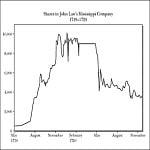 Something practically impossible happened on Tuesday. It rained in Los Angeles in June. Not a lot…less than a tenth of an inch. But it was enough for us to discover we had a hole in the bottom of our shoe as we crossed John Fante Square.
Something practically impossible happened on Tuesday. It rained in Los Angeles in June. Not a lot…less than a tenth of an inch. But it was enough for us to discover we had a hole in the bottom of our shoe as we crossed John Fante Square.
Yet that wasn’t the only thing practically impossible to happen on Tuesday. Bond and gold markets simultaneously projected inflation and deflation. Yields on the 10-year Treasury note jumped to 2.41 percent, anticipating inflation. Yet gold dropped 0.19 percent to 1,175 per ounce, anticipating deflation.
On Wednesday, things were still a little discombobulated. Ten year Treasury yields eclipsed 2.47 percent, while gold held steady. Then, yesterday, yields on the 10-year Treasury note pulled back to 2.38 percent. Gold held at about $1,182 an ounce. Crude oil bounced around $60 a barrel.
The stock market continues to yo-yo up and down. The DOW has gone up and down, and down and up, all year. But it has nothing to show for its troubles. It’s currently about where it was when the year started.
What to make of it? Are stocks coiling up like a spring for their next great leap forward? Or are they topping out?
Ominous Parallels
Mark Cook, at MarketWatch, sees hints and clues in rising Treasury yields. More ominously, he sees parallels to this current market and 1987…
“The summer that year began with a slow, methodical rise in actual rates. Yet the Fed did not raise the discount rate, even though actual rates suggested otherwise. The fall of 1987 arrived with the stock market having hit an all-time high in late August, unfazed by this unsettled condition.
“As it happened, the Federal Reserve was literally forced to raise interest rates. Policymakers were behind the curve severely, just as the Fed is now. The 1987 rising-rate action caused stock prices to tumble more than 30 percent within two months, including a sharp 20 percent selloff in October — still among the Dow Jones Industrial Average’s worst one-day percentage declines ever.
“These warning signs are again visible. The first week of June recorded the highest interest rates since December. Bond prices are down about 12 percent since the end of January.
“The stock market, meanwhile, follows the bond market’s direction — except by a much wider margin. A multiple of 2.0 is conservative. A 2x multiplier figured against the recent 12 percent plus loss in bonds prices would generate a 24 percent decline in stock prices.
“At current levels, such a slide would equate to a loss of about 500 points on the S&P 500 SPX, and a Dow pullback of close to 4,300 points.”
Riding the Waves
Others are sensing a big selloff is in the works. Our old friend Robert Prechter of Elliott Wave International has been following market wave patterns for over 35 years. He believes markets trend in five waves and retrace in three waves.
Quite frankly, no matter how much we squint our eyes at a stock chart, we can’t see a predictable wave pattern for the life of us. Prechter, however, has made a respectable career riding the waves and predicting what will happen next. Currently, he sees wave patterns warning of a potential stock market collapse.
“If the cycle is still operating,” says Prechter, “the stock market is at high risk of a sharp collapse. Near term, we’re prepared to see the DOW make one more high. But it doesn’t have to happen.”
“Today, the stock market is in its third mania in 15 years. The historic overvaluation of 2000 has never been properly corrected. But it will be.”
Make of it what you must. From our perspective, regardless of whether you agree with Elliott Wave principles or think they are a load of nonsense, pulling some money out of the stock market right now seems like a good idea.
A tsunami could crash the market before the year’s through.
Sincerely,
MN Gordon
for Economic Prism




